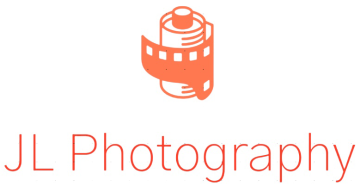The most powerful image I ever captured broke every photography rule. It was high noon in Marrakech, with harsh shadows cutting across a craftsman’s weathered face as he worked on intricate metal lanterns. Traditional photography wisdom would have had me pack up my camera and wait for golden hour.
I almost did exactly that.
But something made me pause. The brutal contrast between light and shadow wasn’t a technical failure. It was telling his story more authentically than any perfectly lit portrait ever could.
After photographing in over 30 countries, I’ve developed approaches that often contradict what’s typically taught. These lessons weren’t found in textbooks but emerged from necessity, failure, and a gradual shift in how I see the world through my lens.
Here are seven counterintuitive lessons that transformed my travel photography. They might just do the same for yours.
1. Embrace “Bad” Light as a Storytelling Element
Photography education often revolves around chasing “perfect” light. Golden hour. Blue hour. Soft, diffused illumination.
But what happens when you’re in a bustling market at noon? Or when a fleeting human moment occurs under fluorescent bulbs?
I’ve learned that light isn’t just illumination; it’s a character in your story. Professional photographers confirm this philosophy: “Sometimes, instead of trying to avoid harsh light, it’s better to steer into the skid! Embrace the high-contrast effect, and see what you can create.” (https://digital-photography-school.com/3-quick-tips-for-photographing-in-harsh-midday-sun/)
In that Marrakech medina, the harsh light revealed the craftsman’s environment. The deep shadows and bright highlights mirrored the contrast in his life. The glints on metal showed his creation of beauty amid challenging conditions.
The “bad” light was actually perfect for the story.
For beginners: Next time you encounter harsh midday sun or unflattering artificial light, don’t put your camera away. Ask yourself: How does this light feel? What story is it telling? How can I use these shadows and highlights as compositional elements?
2. Carry Less, See More
We’re conditioned to believe more gear equals better photos. A backpack full of lenses. Multiple camera bodies. Filters, flashes, tripods.
I’ve found the opposite to be true.
When I stripped down to a camera and one or two lenses, something unexpected happened. I stopped thinking about equipment and started seeing more deeply.
Travel photography experts note that “with limited options, say a single prime lens, you stop worrying about what you could be using and start focusing intensely on how to make what you have work.” (https://www.richardalam.com/journal/minimal-travel-filmmaking-photography-gear-essentials)
Minimal gear forces you to move, to observe, to wait for the right moment rather than reaching for a different lens. It makes you physically engage with your environment.
It also makes you less intimidating. You become a person with a camera rather than “a photographer” with all the barriers that creates.
For beginners: Try spending a day with just one lens, preferably a prime. Feel the initial frustration of constraints, then notice how your eye adapts. Watch how differently people react to you with less equipment. Notice how much more you see when you’re not busy changing lenses.
3. Create Connection Before Capturing
The most compelling portraits come from connection, not technique.
Across language barriers and cultural differences, I’ve found universal ways to build trust before raising my camera. A genuine smile. Open body language. Eye contact that acknowledges someone’s humanity.
Research confirms this approach: “A warm, unforced smile is disarming and communicates goodwill universally. Approaching people with open posture, no crossed arms, no hiding behind the camera initially, making eye contact, offering a slight nod” are powerful techniques that transcend language barriers. (https://behindthequest.com/take-travel-portraits-ethically/)
I often put my camera down first. I observe. I learn a few local phrases. I show genuine interest in what people are doing.
When photographing a craftsman in Jordan, I spent time watching his process, asking questions through gestures, and purchasing a small item. The portrait came later, after trust was established. His expression showed a depth that no technical skill alone could have captured.
For beginners: Before photographing someone, spend time without your camera visible. Learn to say “beautiful” and “may I take your photo?” in the local language. Show people their image on your screen. Remember that meaningful connection creates better photographs than perfect technique.
4. Turn Limitations Into Creative Catalysts
Every limitation contains a creative opportunity.
No tripod in low light? Perhaps a slightly blurred image might better capture the energy of a night market than a technically perfect, high-ISO shot.
Only have a wide-angle lens? Maybe that will force you to get closer to your subject, creating more intimacy than a distant telephoto shot.
Caught in rain? Water drops, reflections, and huddled people create visual elements unavailable in “good” weather.
In a cramped Tokyo alleyway restaurant, my movement was severely restricted. Instead of fighting this limitation, I embraced it, using the tight quarters to capture intimate details and interactions I might have missed with more space.
Weather becomes a character. Constraints become compositional tools. Technical “flaws” become stylistic choices.
For beginners: When faced with a photographic challenge, ask yourself: “How can this limitation become part of my story?” Instead of fighting constraints, incorporate them into your creative vision.
5. Develop a Reliable Workflow for the Road
The unglamorous truth about travel photography: without a solid workflow, your best images might never make it home.
My system evolved from painful lessons. Lost files. Corrupted cards. Dead batteries at crucial moments.
Now I follow a disciplined approach. I shoot RAW+JPEG. The RAW files are for quality and flexibility; the JPEGs for quick review and sharing.
Every evening, I transfer images to my laptop and immediately back them up to an external drive. Only then do I format my cards.
My culling process is equally disciplined. A first pass eliminates obvious rejects. A second identifies potential keepers. I apply basic edits to the best images, using presets I’ve developed for common scenarios.
This system balances quality with efficiency. It ensures my images survive while allowing me to spend more time shooting and experiencing, less time staring at a screen.
For beginners: Create a backup routine and stick to it religiously. Develop a rating system for quick culling. Learn to be decisive about your images. Remember that discipline with your digital workflow creates freedom in your creative work.
6. Establish an Ethical Framework
Travel photography carries responsibility. We’re not just taking images; we’re representing people and cultures.
My guiding principle is simple: people first, photographs second.
This means seeking informed consent whenever possible. It means respecting a “no,” whether verbal or through body language. It means considering how my images might impact those I photograph.
It also means avoiding stereotypes and “othering.” I try to capture shared humanity rather than exoticizing differences.
I ask myself: “Would I take this photo of someone in my home country? Am I representing this person or place with dignity?”
Ethical photography experts emphasize that “those who take photos while traveling have an ethical responsibility to preserve the dignity of their subjects and provide a faithful, comprehensive visual depiction of their surroundings to avoid causing public misperceptions.” (https://ghu.uniteforsight.org/cultural-competencycourse4)
This ethical framework doesn’t limit creativity. It deepens it by pushing me toward more thoughtful, respectful engagement.
For beginners: Research cultural sensitivities before traveling. Learn what’s considered sacred or private. Practice asking for permission through universal gestures. Remember that respect creates trust, which leads to more authentic images.
7. Learn from Failure, Then Reset
My most valuable lessons came from my biggest failures.
In Northern India, I missed a once-in-a-lifetime shot at a festival because I hadn’t adjusted my settings when moving from shade to bright sunlight. By the time I corrected my exposure, the moment was gone forever.
That painful experience taught me to develop a “ready state” ritual. Now, after any specific shooting scenario, I reset my camera to versatile settings before even lowering it from my eye.
I learned to anticipate rather than just react. To scan my environment constantly. To practice changing settings by feel, without looking away from the viewfinder.
Most importantly, I learned to forgive myself and move forward. Dwelling on missed shots only guarantees missing more.
For beginners: Analyze your failures with curiosity rather than judgment. What specific lesson can you extract? Create systems to prevent similar mistakes. Then let go and focus on the next opportunity.
Photograph What It Feels Like, Not Just What It Looks Like
If I could share just one insight from my years of travel photography, it would be this: Don’t just photograph what a scene looks like; photograph what it feels like.
Technical skills matter. They’re the grammar of visual language. But they serve something greater: the emotional truth of what you’re experiencing.
The chill of morning fog in the mountains. The warmth of a shared laugh across cultures. The quiet dignity of an artisan at work. The chaotic energy of a festival.
These feelings, filtered through your unique perspective, create photographs that resonate more deeply than technically perfect but emotionally empty images.
As the world becomes increasingly connected and cameras more ubiquitous, this emotional authenticity becomes even more valuable. Anyone can document the Eiffel Tower. Not everyone can share how it felt to be there, in that specific moment, with your specific perspective.
Your unique voice emerges not from perfect technique but from your authentic response to the world. Trust that response. Develop the technical skills to express it clearly. But never sacrifice the feeling for the formula.
Before raising your camera on your next journey, take a moment to experience where you are with all your senses. Let yourself be moved. Then let that feeling guide your eye.
The resulting images won’t just show where you’ve been. They’ll share how it felt to be there. And that’s the true power of travel photography.

